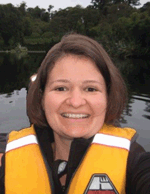Five years on: monitoring of Long Island Point’s Western Port wastewater discharge
Melanie Bok A C , Scott Chidgey B and Peter Crockett BA Esso Australia Pty Ltd (Esso), 12 Riverside Quay, Southbank, Vic. 3006, Australia.
B CEE Consultants, Unit 4, 150 Chesterville Road, Cheltenham, Vic. 3192, Australia.
C Corresponding author. Email: melanie.bok@exxonmobil.com
The APPEA Journal 57(1) 10-25 https://doi.org/10.1071/AJ16193
Accepted: 20 February 2017 Published: 29 May 2017
Abstract
The Esso Long Island Point facility is situated on the edge of Western Port, an important Ramsar designated wetland for migratory birds in Victoria, Australia. The gas fractionation and crude oil storage facility has operated for over 40 years and has discharged treated wastewater to Western Port for most of these years in accordance with its environmental regulatory licence. The 2003 State Environment Protection Policy for Waters of Western Port is the Victorian Environment Protection Authority’s regulatory framework for licensing wastewater discharges to the wetland, and among other items, requires that discharges must cause no ‘detrimental change in the environmental quality of the receiving waters’ or ‘chronic impacts outside any declared mixing zone’. A major upgrade to the water treatment facility in 2010 included a risk-based marine ecosystem program to monitor key environmental indicators including water quality, jetty pile invertebrate communities and seagrass condition. The program’s longer-term monitoring record has allowed assessment of potential chronic effects on invertebrates and seagrass by comparing temporal changes at monitoring sites over the period from pre-operations (2010) to present (2016) and spatial changes between near-field to far-field sites, kilometres from the discharge point. The program has shown that management of the discharge maintains beneficial uses and environmental objectives at the boundary of the mixing zone, and the marine ecosystem is protected from potentially slower and longer-term adverse effects in the far-field. The program demonstrates that the treated wastewater discharge has had no adverse impact on key environmental indicators in Western Port over the longer-term study period.
Keywords: crude storage, environment, fractionation, marine monitoring, Ramsar, water treatment.

Melanie Bok graduated as a Mechanical Engineer and recently completed a Master of Sustainability degree at Monash University. As the Environment and Regulatory Advisor at Esso Australia Pty Ltd, she gives advice on environmental and regulatory matters for Esso’s offshore platforms in Gippsland as well as the Long Island Point facility. This includes writing regulatory approval documents, coordinating monitoring programs for discharges, interfacing with environmental regulators and performing environmental roles in Esso’s emergency response team. She enjoys the Australian bush, cycling, kayaking, travelling, growing a vegie patch, and anything musical. |

Scott Chidgey holds a Master of Science from the University of Melbourne, and is Principal Marine Environmental Scientist and Director of Consulting Environmental Engineers in Melbourne. Scott has more than 30 years of consulting experience in applied multidisciplinary marine studies throughout Australia, including oil and gas projects in Bass Strait, the Timor Sea and Gulf of Papua. He works closely with engineers and other scientists from a range of organisations, and maintains close contacts with research colleagues. Scott has particular expertise in developing and interpreting risk-based, integrated marine scientific programs for regulatory approvals and compliance purposes. He is responsible for risk-based monitoring programs for more than twenty licenced wastewater discharges in Australian states. Member of Australian Water Association and Australian Marine Sciences Association. |

Peter F. Crockett is a senior marine scientist at Consulting Environmental Engineers. Peter has a Bachelor of Science (Marine Botany), Bachelor of Arts (Indonesian) and Master of Philosophy (Marine Botany) from the University of Melbourne. Peter is a member of the Institute for Marine Engineering, Science and Technology and the Australian Marine Sciences Association. |
References
Bureau of Meteorology (2016). Climate summaries archive: Victoria in 2010, 2011, 2013, 2014 and 2015. Available at http://www.bom.gov.au/climate/current/statement_archives.shtml?region=vic&period=annual [Verified 1 December 2016].Bulthuis, D. A., and Woelkerling, W. J. (1983). Seasonal variation in standing crop, density and leaf growth rate of the seagrass Heterozostera tasmanica, in Western Port and Port Phillip Bay, Victoria, Australia. Aquatic Botany 16, 111–136.
| Seasonal variation in standing crop, density and leaf growth rate of the seagrass Heterozostera tasmanica, in Western Port and Port Phillip Bay, Victoria, Australia.Crossref | GoogleScholarGoogle Scholar |
Butler, A. J., and Connolly, R. M. (1995). Development and long term dynamics of a fouling assemblage of sessile marine invertebrates. Biofouling 9, 187–209.
Butler, A. J., and Connolly, R. M. (1999). Assemblages of sessile marine invertebrates: still changing after all these years? Marine Ecology Progress Series 182, 109–118.
| Assemblages of sessile marine invertebrates: still changing after all these years?Crossref | GoogleScholarGoogle Scholar |
CEE (2010). Report on dilution predictions for treated effluent discharge at Esso’s Long Island Point Jetty. Consulting Environmental Engineers report to Esso Australia, December 2010.
CEE (2012). Long Island Point wastewater discharge marine ecological and water quality monitoring 2010–2011. CEE Consultants report to Esso Australia, May 2012.
CEE (2015). Long Island Point wastewater discharge effluent ecotoxicity monitoring. CEE Consultants report to Esso Australia, May 2014.
CEE (2016). Long Island Point wastewater discharge marine ecological and water quality monitoring 2010–2016. CEE Consultants report to Esso Australia, February 2016.
Department of Sustainability and Environment (2000). Mangroves and salt marshes in Westernport Bay, Victoria, Ross, R. Arthur Rylah Institute, June 2000. Available at http://www.depi.vic.gov.au/__data/assets/pdf_file/0010/226297/Mangroves.pdf [Verified 28 February 2017]
Environment Protection Authority (2003). ‘State Environment Protection Policy (Waters of Victoria), No. S 107, Wednesday 4 June 2003.’ Victorian Government Gazette. (Victorian Government Printer: Melbourne)
Environment Protection Authority (2009). ‘Industrial Waste Resource Guidelines: Sampling and Analysis of Waters, Wastewaters, Soils and Wastes. Publication IWRG701.’ (EPA Victoria: Melbourne.)
Environment Protection Authority (2015). ‘Guidelines for Licence Management. Publication 1322.6, May 2015.’ (Environment Protection Authority Victoria: Melbourne.)
Hall, K., and Chidgey, S. (2013). Assessing the environmental impact of water discharge in a sensitive near-shore marine environment. The APPEA Journal 53, 301–312.
Jenkins, G., and Keough, M. (2015). Seagrass resilience in Port Phillip Bay. Final report to the Seagrass and Reefs Program for Port Phillip Bay. University of Melbourne report to DELWP.
Kay, A.M., and Butler, A.J. (1983). ‘Stability’ of the fouling communities on the pilings of two piers in South Australia. Oecologica 56, 70–78.
| ‘Stability’ of the fouling communities on the pilings of two piers in South Australia.Crossref | GoogleScholarGoogle Scholar |
Longmore, A. (1997). Analysis of water quality in Western Port, 1973–97 in relation to protection of beneficial uses. Internal report no. 4. Marine Freshwater Research Institute, Victoria, Melbourne.
Melbourne Water (2011). ‘Understanding the Western Port environment: a Summary of Current Knowledge and Priorities for Future Research.’ (Melbourne Water: Melbourne.)
Ministry of Conservation (1975). ‘Western Port Bay Environmental Study.’ (Ministry of Conservation, Victoria: Melbourne.)
MSE (1989). History and review of marine environmental monitoring in Western Port, 1972 to 1989. Marine science and ecology report to BHPB.


